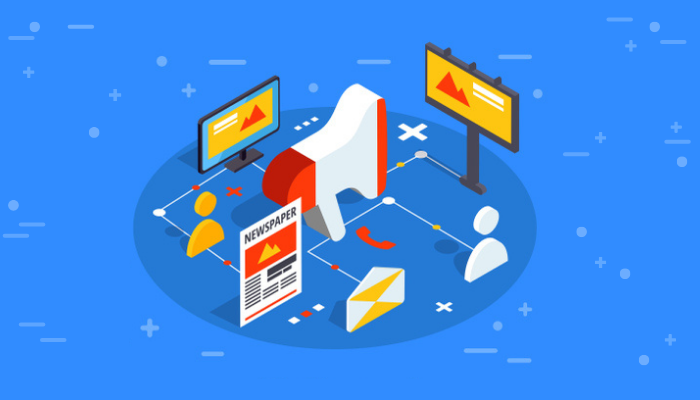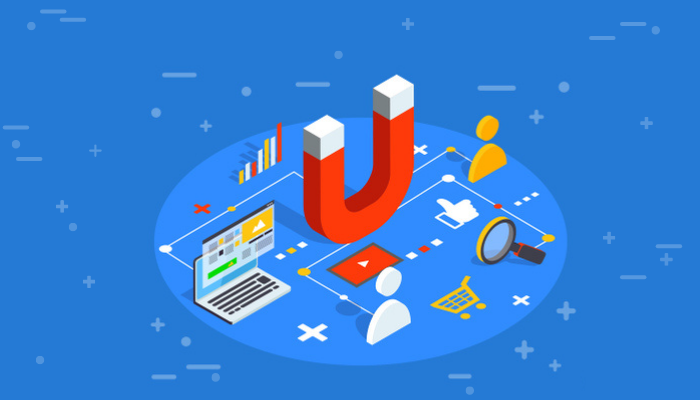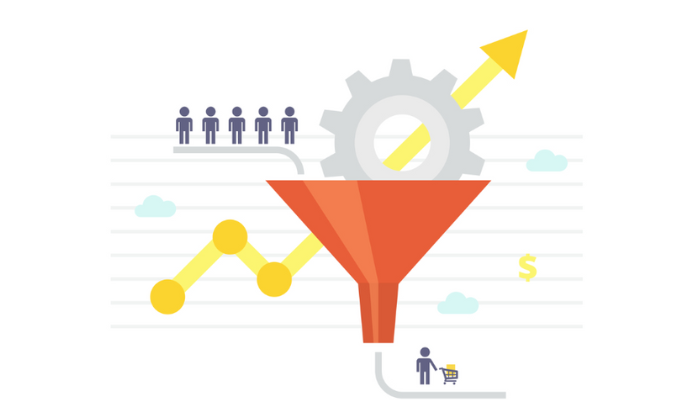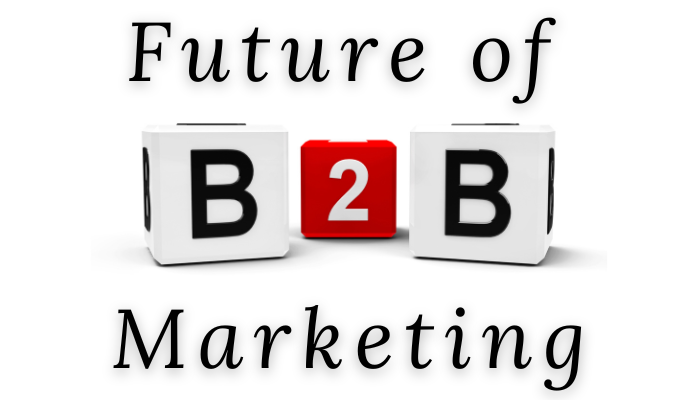The global landscape has undergone significant transformations with the advent of digitization and modernization. In particular, every facet of human interaction, including B2B marketing, has experienced continuous evolution. The emergence of the Automation and AI Integration facets further reshaped the B2B marketing landscape, leading to a profound impact on traditional practices such as in-person meetings and physical interactions.
Companies now need to depend more on technology and software to ensure that their marketing prospects are seeing growth. The future of B2B marketing will need more integration and automation and better B2B sales strategy according to the McKinsey analysis.
Let us now look into the future of B2B marketing 2024 through the analysis of various stages:
Stage one: Marketing’s First Shift

Over the years from 2005 to 2015 in marketing technology, marketing departments played a huge role in garnering revenues. The department, which was earlier responsible for throwing parties and printing colored brochures, started playing a major driver in revenue and pipeline. Marketing started its role at the top of the ladder via its marketing automation tools of emails, acquisition, and nurturing of leads, and then passing it on to the sales department.
The marketing team is the owner of the email and is responsible for taking care of customer satisfaction. Such aspects played a good role in giving marketing its due credit and respect. When we talk about marketing work, many B2B firms still have marketing departments working on generating emails and leads and passing them on to the sales team. However, the future of B2B sales considers these activities as persisting and outdated.
Stage two: Current situation

In recent years, B2B marketing has undergone substantial changes, necessitating a reevaluation of B2B sales strategies. Key drivers for this transformation include the evolving role of marketing and the increased involvement of the sales team in top-of-the-funnel activities. This shift is propelled by the adoption of sales engagement tools like Outreach and SalesLoft, coupled with compliance requirements such as GDPR. Automation and AI play a pivotal role in enabling the sales team to send targeted and personalized emails, enhancing overall efficiency in prospect outreach. Utilizing white label digital marketing services can further support these advancements by providing specialized expertise and resources without straining internal teams..
- Modern consumers now harbor elevated expectations, demanding businesses to position themselves as comprehensive hubs for sales activities. To meet these expectations, companies need to focus on enhancing channels, talent, technology, and organizational culture. Automation and AI technologies further contribute by providing data-driven insights, personalized experiences, and streamlined processes.
- The integration of automation and AI into B2B marketing strategies reflects the industry’s response to changing dynamics, ensuring that sales and marketing efforts are not only synchronized but also leverage technological advancements and align with heightened consumer expectations.
A recent study by Gartner Digital Markets revealed that consulting independent, third-party information sources plays a significant role, constituting at least 50% of the software buyer’s journey.
Incorporating Automation and AI:
The unorganized sales approach in B2B sales, involving multiple parties with diverse needs and concerns, often leads to chaos. Sales representatives frequently grapple with the complexity of B2B sales, especially since the sales process heavily depends on understanding the target customer. Integrating automation and AI into the sales process can bring order and efficiency by automating repetitive tasks, analyzing customer data, and providing valuable insights for a more personalized approach. Also, using an audio translator can facilitate seamless communication with international clients, breaking language barriers and enhancing engagement..
Enhanced Buying Research on Your Website:
Waiting for customers to visit your website and express interest can be time-consuming. Data indicates that prospects typically engage in an average of 12 searches before exploring a website, utilizing approximately 10.4 resources for research purposes. Automation tools can play a crucial role in capturing and analyzing customer behavior on your website, enabling proactive engagement and personalized content recommendations.
Increased Focus on Post-Sale Revenue:
While many marketers concentrate on acquiring new business, the true significance lies in the growth of recurring revenue models and expanding revenue streams beyond the initial sale. Automation can contribute by nurturing customer relationships through personalized communication, upselling, and cross-selling efforts based on AI-driven insights into customer preferences.
Emergence of Account-Based Marketing:
Recognizing the limitations of traditional lead-focused strategies, B2B marketers are shifting towards account-based marketing (ABM), aligning with the ideal customer profiles. As inbound marketing faces challenges amid rising competition, automation, and AI play a crucial role in identifying and targeting high-value accounts, enabling a more focused and personalized approach.
Multi-channel orchestration as a need:
In the fiercely competitive B2B marketing landscape, reaching prospects through digital channels has become challenging. Strategic integration of human and digital touches is essential, with automation facilitating coordinated and personalized interactions across multiple channels. Automation tools help optimize the balance between human and digital efforts, ensuring effectiveness and trustworthiness in customer engagement.
Now comes the aspects that will determine the future of B2B marketing 2024; Implementing automation and AI can empower sales teams to effectively manage the top of the funnel:

- The influence of GDPR and privacy laws has resulted in a reduction in the volume of marketing emails sent to affected regions. Some companies are adapting by transitioning their email marketing to personalized messages delivered by salespersons rather than traditional HTML emails.
- Investing in technologies geared towards expediting the sales process can significantly benefit your company. These tools enable sales staff to engage with potential clients at optimal times, facilitating quicker conversions.
- For companies with smaller databases, leveraging sales perspective tools can fuel marketing growth by identifying and connecting with new buyers.
Notably, personal emails are deemed more effective than mass-produced HTML emails generated by the marketing department. This highlights the shift towards sales taking a more hands-on approach to marketing tasks, including sourcing email addresses, acquiring leads, sending personalized email communications, and utilizing social media for outreach. Automation and AI play a crucial role in streamlining these processes, enhancing efficiency, and improving overall effectiveness.
Also read: How to integrate email marketing with social media efforts: Sync, Synergise and Shine!
More integration of marketing with sales:
The future of b2b marketing and b2b sales come along the same lines when we talk about the future of b2b marketing. Marketing is not much about launching campaigns to acquire leads but more towards creating forums for meaningful interactions for different members of an account’s buying group. It has to support the sales cycle, increase the pace of deal velocity, and collaborate with sales.
“The traditional model of linear deal progression, with a handoff from marketing to sales, won’t work for complex modern B2B buying.”
– Brent Adamson, Distinguished Vice President, Advisory, Gartner.
Using Automation and AI for Enhanced Predictive Analysis:
To optimize your efforts, it’s essential to incorporate B2B intent data and tailor your strategies accordingly. Identifying potential clients before they explore alternative solutions is challenging, given that B2B buyers spend approximately 67 percent of their journey online.
Your predictive analysis should be built on four key factors, with the integration of automation and AI streamlining the process:
- Fit: Assess whether the acquired lead aligns with the ideal customer profile standards and contributes positively to your objectives. Automation tools can facilitate the analysis of vast datasets, ensuring a more accurate evaluation of lead fit.
- Intent: Uncover customer intent by examining the prospect’s content consumption patterns. Automation and AI can help track and analyze these patterns, providing insights into whether the prospect’s interest is increasing or decreasing over time.
- Relationship: Delve into the existing relationship between your B2B company and the specific customer. Automation tools can assist in analyzing historical data to determine customer loyalty and the effectiveness of previous interactions in convincing them to make a purchase.
- Engagement: Measure customer engagement with your website and content. Automation and AI can efficiently track and interpret engagement metrics, such as time spent on the website and interactions with content. High engagement signals that your digital content marketing strategy is resonating effectively.
By incorporating automation and AI into your predictive analysis, you can enhance the accuracy and efficiency of evaluating fit, intent, relationship, and engagement, ensuring your efforts align with customer behaviors and preferences.
Always make sure that you reach out via different channels as;
- Display ad CTR can be as low as 1.0%.
- Over 38.8% of US internet users have an ad blocker enabled.
- B2B match rates can be as low as 10%.
Also read: Marketing vs Advertising: What to Choose and When?
Now that you can assume how B2B marketing will look in the future, chart your efforts accordingly. A website like bizprospex.com can help you sort your problems via their lead generation tactics, email appending services, data appending services, AML Sanctions List, and PEP List.
